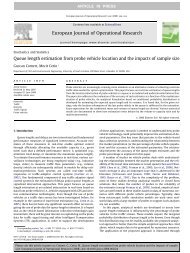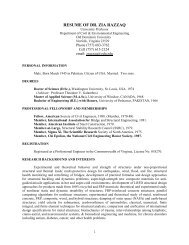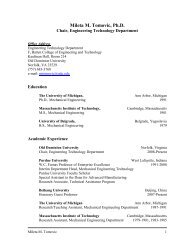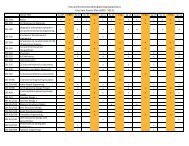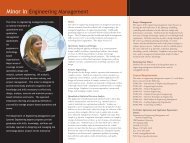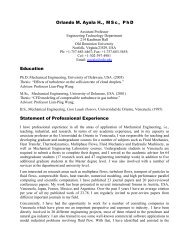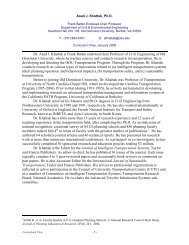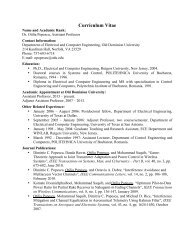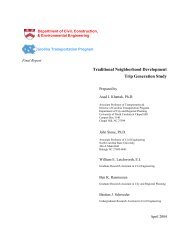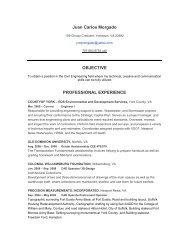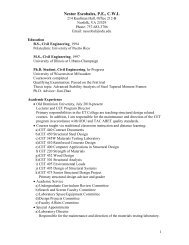storm water management model, version 4: user's manual
storm water management model, version 4: user's manual
storm water management model, version 4: user's manual
Create successful ePaper yourself
Turn your PDF publications into a flip-book with our unique Google optimized e-Paper software.
Table 1-1. ContinuedEase of Application(1) Nonproprietary <strong>model</strong> available from EPA, Athens, GA or University of Florida, Department ofEnvironmental Engineering Sciences, Gainesville.(2) Updated user=s <strong>manual</strong> and thorough documentation of most routines published as EPA reports; no onereport covers all <strong>model</strong> aspects.(3) Test cases documented in several EPA and other reports.(4) Short course proceedings also useful for <strong>model</strong> applications.(5) U.S. and Canadian users groups with newsletters and semi-annual meetings permit publication ofchanges.(6) Due to its age (originally published in 1971), availability, and documentation, examples of SWMMusage are widely available in the literature; bibliography available.(7) Frequent <strong>model</strong> update/corrections/improvements are often difficult to learn about; new <strong>model</strong> releasedapproximately on a bi-annual basis.(8) Size of <strong>model</strong> most frequent deterrent to use, however, see item 13 above under Input Data Requirements.(9) Initial <strong>model</strong> setup often moderately difficult due to size.(10) Model supported by EPA Center for Water Quality Modeling, Athens, GA.Output and Output Format(1) Input data summary including precipitation.(2) Hydrographs and pollutographs (concentrations and loads versus time) at any point in system on timestep or longer basis; no stages or velocities printed.(3) Extran transport also outputs elevation of hydraulic grade line.(4) Surcharge volumes and required flow capacity; original transport <strong>model</strong> will resize conduits to passrequired flow (optional).(5) Stage, discharge and soil moisture content for subsurface routing in Runoff Block.(6) Removal quantities in storage/treatment units, generated sludge quantities.(7) Summaries of volumes and pollutant loads for simulation period, continuity check, initial and finalpounds of solids in conduit elements.(8) Daily (optional), monthly, annual and total summaries for continuous simulation, plus ranking of 50highest time-step precipitation runoff and pollutant values.(9) Line printer plots of hyetographs, hydrographs, and pollutographs.(10) Costs of simulated storage/treatment options.(11) Statistical analysis of continuous (or single event) output for event separation, frequency analysis,moments and identification of critical events.Linkages to Other Models(1) Linkage provided to EPA WASP and DYNHYD receiving <strong>water</strong> quality <strong>model</strong>s.(2) Individual blocks and the total SWMM <strong>model</strong> have been linked to the HEC STORM <strong>model</strong>, theQUAL-II <strong>model</strong>, simplified receiving <strong>water</strong> <strong>model</strong>s, and others.(3) Individual blocks (e.g., Runoff Block) have been altered by various groups.Personnel Requirements(1) Civil/environmental engineer familiar with urban hydrological processes for data reduction and <strong>model</strong>analysis.(2) Computer programmer for <strong>model</strong> setup and establishment of off-line files on main-frames.11



